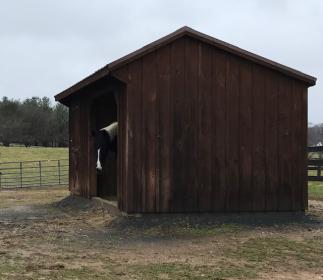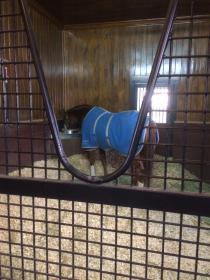Here, winter temps average 10-30 degrees Fahrenheit, sometimes colder, with occasional wind and lots of snow. My relatively fluffy, unclipped Arab X mare lives outside w/ a netted round bale, a buddy and a 3-sided shelter that she uses during horrible weather.
I have a turnout sheet and a 250 g midweight from Schneider’s for her. She’s been blanketed a grand total of 3 days with her rain sheet this fall, when we had 2" of 35-degree rain in a little over 24 hours. Otherwise, she’s been naked and rewards me by liberally coating herself in dirt every day. The midweight goes on if it drops below zero or it’s a terribly windy blizzard… but I think that’s probably more to make me feel better than because she needs it. She undresses herself if she doesn’t want to wear the blanket. It’s really very handy.
It’s interesting because I bought her in February '17 from several hours further south and she barely had any winter coat since she’d been blanketed and stalled… she took about a week to adjust to living outside and after she removed her rain sheet twice and tore a hole in a another one in a week, we decided she was done with blankets for the year. She was much fluffier the next winter and even fluffier the next winter.



